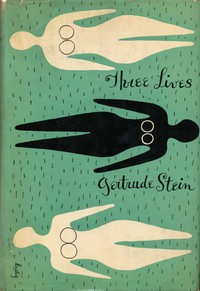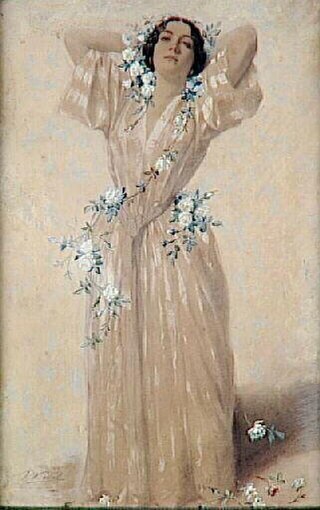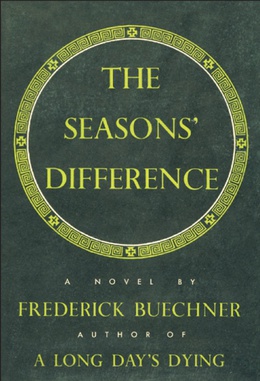Related Research Articles

Gustave Flaubert also known as Flambert, was a French novelist. He has been considered the leading exponent of literary realism in his country and abroad. According to the literary theorist Kornelije Kvas, "in Flaubert, realism strives for formal perfection, so the presentation of reality tends to be neutral, emphasizing the values and importance of style as an objective method of presenting reality". He is known especially for his debut novel Madame Bovary (1857), his Correspondence, and his scrupulous devotion to his style and aesthetics. The celebrated short story writer Guy de Maupassant was a protégé of Flaubert.

Madame Bovary, originally published as Madame Bovary: Provincial Manners, is a novel by French writer Gustave Flaubert, published in 1857. The eponymous character lives beyond her means in order to escape the banalities and emptiness of provincial life.
The Member of the Wedding is a 1946 novel by Southern writer Carson McCullers. It took McCullers five years to complete, although she interrupted the work for a few months to write the novella The Ballad of the Sad Café.

Sentimental Education is a novel by Gustave Flaubert. The story focuses on the romantic life of a young man named Frédéric Moreau at the time of the French Revolution of 1848 and the founding of the Second French Empire. It describes Moreau's love for an older woman based on the wife of the music publisher Maurice Schlesinger, who is portrayed in the book as Jacques Arnoux. The novel's tone is by turns ironic and pessimistic; it occasionally lampoons French society. The main character often gives himself over to romantic flights of fancy.
Three Tales is a work by Gustave Flaubert that was originally published in French in 1877. It consists of the short stories: "A Simple Heart", "Saint Julian the Hospitalier", and "Hérodias".

Incidents in the Life of a Slave Girl, written by herself is an autobiography by Harriet Jacobs, a mother and fugitive slave, published in 1861 by L. Maria Child, who edited the book for its author. Jacobs used the pseudonym Linda Brent. The book documents Jacobs's life as a slave and how she gained freedom for herself and for her children. Jacobs contributed to the genre of slave narrative by using the techniques of sentimental novels "to address race and gender issues." She explores the struggles and sexual abuse that female slaves faced as well as their efforts to practice motherhood and protect their children when their children might be sold away.
The Lady of the Camellias, sometimes called in English Camille, is a novel by Alexandre Dumas fils. First published in 1848 and subsequently adapted by Dumas for the stage, the play premiered at the Théâtre du Vaudeville in Paris, France, on February 2, 1852. It was an instant success. Shortly thereafter, Italian composer Giuseppe Verdi set about putting the story to music in the 1853 opera La traviata, with female protagonist Marguerite Gautier renamed Violetta Valéry.
Free indirect speech is a literary term that refers to writing a character's first-person thoughts in the voice of the third-person narrator. It is a style using aspects of third-person narration conjoined with the essence of first-person direct speech. The technique is also referred to as free indirect discourse, free indirect style, or, in French, discours indirect libre.
Kuchuk Hanem was a famed beauty and Ghawazee dancer of Esna, mentioned in two unrelated accounts of travel to Egypt, the French novelist Gustave Flaubert and the American adventurer George William Curtis.
Chimera is a 1972 fantasy novel written by American writer John Barth, composed of three loosely connected novellas. The novellas are Dunyazadiad, Perseid and Bellerophoniad, whose titles refer eponymously to the mythical characters Dunyazad, Perseus and Bellerophon. The book is an example of postmodernism, which can be seen in its metafictional content and its incorporation of stylistic elements that go beyond the traditional novel genre. It shared the U.S. National Book Award for Fiction with Augustus by John Edward Williams.

The Shadow Lines (1988) is a Sahitya Akademi Award-winning novel by Indian writer Amitav Ghosh. It is a book that captures perspective of time and events, of lines that bring people together and hold them apart; lines that are clearly visible from one perspective and nonexistent from another; lines that exist in the memory of one, and therefore in another's imagination. A narrative built out of an intricate, constantly crisscrossing web of memories of many people, it never pretends to tell a story. Instead, it invites the reader to invent one, out of the memories of those involved, memories that hold mirrors of differing shades to the same experience.
Francis Steegmuller was an American biographer, translator and fiction writer, who was known chiefly as a Flaubert scholar.

Three Lives (1909) is a work of fiction written in 1905 and 1906 by American writer Gertrude Stein. The book is separated into three stories, "The Good Anna," "Melanctha," and "The Gentle Lena."
Breakfast at Tiffany's is a novella by Truman Capote published in 1958. In it, a contemporary writer recalls his early days in New York City, when he makes the acquaintance of his remarkable neighbor, Holly Golightly, who is one of Capote's best-known creations. In 1961 it was adapted into a major motion picture of the same name.
Memoirs of a Madman is an autobiographical text written by Gustave Flaubert in 1838. The next year, Flaubert dedicated it to his friend, Alfred Le Poittevin. The manuscript changed hands twice before being finally published in La Revue Blanche from December 1900 to February 1901, some twenty years after Flaubert's death.

Apollonie Sabatier was a French entertainer, artist's model and courtesan, who became a salon hostess and bohemian muse to many of the French artists of 1850s Paris.

St. Thaïs of fourth-century Roman Alexandria and of the Egyptian desert was a repentant courtesan.

How Beautiful the Ordinary: Twelve Stories of Identity is an anthology of LGBTQ short stories for young adults edited by American author Michael Cart. It was first published in 2009. The anthology contains an introduction by Cart, 11 short stories, and one novella by acclaimed lesbian and gay authors.

The letters of Gustave Flaubert, the 19th-century French novelist, range in date from 1829, when he was 7 or 8 years old, to a day or two before his death in 1880. They are considered one of the finest bodies of letters in French literature, admired even by many who are critical of Flaubert's novels. His main correspondents include family members, business associates and fellow-writers such as Théophile Gautier, the Goncourt brothers, Guy de Maupassant, Charles Augustin Sainte-Beuve, George Sand, Ivan Turgenev and Émile Zola. They provide a valuable glimpse of his methods of work and his literary philosophy, as well as documenting his social life, political opinions, and increasing disgust with bourgeois society.

The Seasons’ Difference is the second novel of American author and theologian, Frederick Buechner. It was published in 1952 by Alfred A. Knopf.
References
- Gustave Flaubert: (edited by Claudine Gothor-Mersch Les Memoires d'un fou, Novembre, Pyrenees-Corse, Voyage en Italie: Paris: Gallimard (Folio): 2001.